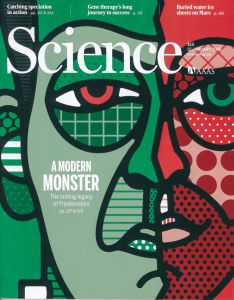Join getAbstract to access the summary!

Join getAbstract to access the summary!
Henk van den Belt, Kai Kupferschmidt and Jon Cohen
A Modern Monster
The Lasting Legacy of Frankenstein
Science, 2018
What's inside?
At its bicentennial, Mary Shelley’s Frankenstein is more relevant than ever.
Recommendation
Mary Shelley’s novel Frankenstein, or The Modern Prometheus celebrated its 200th anniversary in 2018. Although the novel has never stopped fascinating, intriguing and inspiring people, its bicentennial provides an excellent opportunity to delve into deeper conversations about some of the key issues it raises, such as the dangers of technology and the social responsibility of scientists. The January 12, 2018 issue of Science magazine does just that, featuring a collection of essays on the continued relevance of Frankenstein’s multi-layered – and sometimes misunderstood – message just at a time when technology is advancing at a dizzying speed. getAbstract believes scientists and non-scientists will enjoy the debates triggered by this classic novel, still so much more than a well-told horror story.
Summary
About the Authors
Henk van den Belt is an assistant professor of philosophy at Wageningen University, Netherlands.
























Comment on this summary